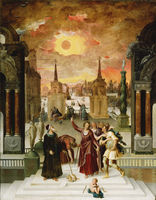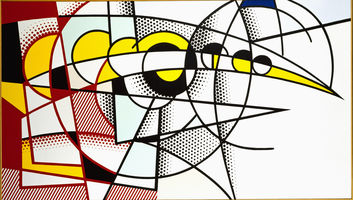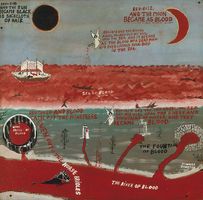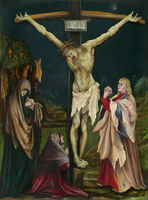Eclipse of the Sun
George Grosz, German, 1893—1959
Eclipse of the Sun, 1926
Oil on canvas
Heckscher Museum of Art, Museum Purchase
The almighty American dollar brands the moon as it blacks out the sun in this Surrealist- and Dada-influenced painting by the German artist George Grosz. Here, the eclipse becomes a sign of despair and the approaching political apocalypse in an unstable Weimar Republic that would soon collapse into Hitler’s lap. The dollar sign suggests Grosz’s disillusion with American financial support through the Dawes Plan after Germany incurred World War I reparations. The cross tangled in Germany’s colors on the table is likely related to Grosz’s perception of the church as a contributor to the unravelling of the nation. Though this may not have been Grosz’s intention, it is worth noting that the cross, coupled with the eclipse, draws to mind Christian crucifixion scenes with the eclipse of sorrow above Christ on the cross.
Laura Valenza, campus collections assistant, Princeton University Art Museum





















